How often should you clean your dryer vent?
Cleaning a dryer vent system is often confused with simply cleaning the lint trap, or lint screen, in front of the dryer drum. However, a system typically includes more than five areas that need regular cleanings, including the dryer vent hose, lint trap, exterior vent hood, and even the dryer motor.
Why clean your dryer duct and dryer vent system? The largest reason is to prevent fire hazards. Dryer cleaning is more than wiping your dryer drum out with warm soapy water and a microfiber cloth. Dryers accumulate lint in more places than just the lint screen, increasing the risk of fires. Read our dryer vent cleaning frequently asked questions to learn more.
So now you know what dryer vent cleaning is, and one of the largest reasons to consider having it done is to reduce the possibility of a house fire, but how often should you clean your dryer vent?
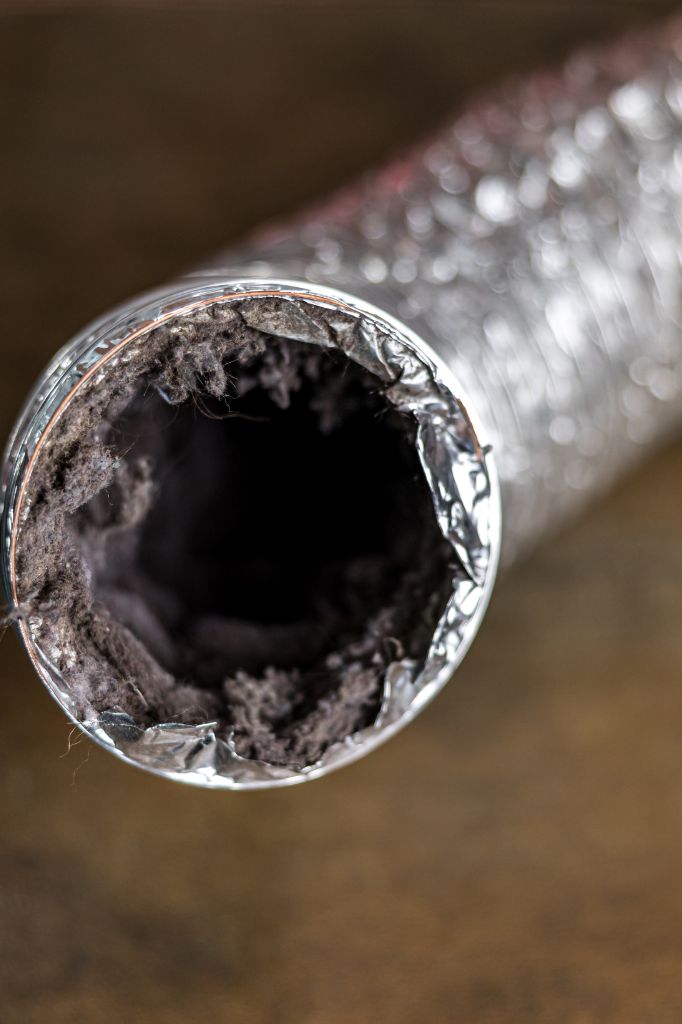
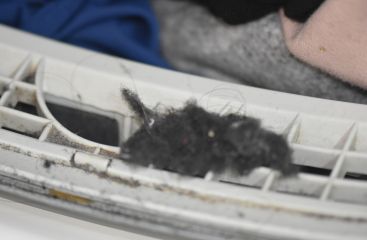
The proper schedule to clean a dryer vent is NOT one size fits all. There are variables that affects how often you should clean your dryer vent system. Generally speaking, the clothes dryer itself, as well as the vent should be cleaned every 1 to 3 years.
The variables that affect frequency include:
- How much laundry – how many loads – you do a week
- How long your dryer vent system is
- How many bends are in your system
- Type, length, and position of the transition vent behind the dryer
- Whether you have pets and pet dander in the dryer vent system
- Whether the vent or duct joints are screwed or taped together
- Where the outside exhaust outlet is, and what kind it is
- What brand of laundry detergent you use
- Manufacturer’s requirements
Some manufacturers are now requiring annual cleaning in order for the dryer appliance warranty to remain intact for it’s full duration. For out-of-warranty clothes dryers, we find the span of 1 to 3 years is the appropriate time span for about 80% of the dryer vent systems.
Some summer homes, cottages, and other less frequently used dryers may be cleaned beyond the 3-year period. In cases of heavier usage and/or systems that have a longer vent leading to the outside of the home, cleanings may be required every 6 to 9 months in order to maintain peak operating efficiency.
Our service technicians will assess your dryer and vent installation and advise the appropriate service frequency required for your specific system. This starts with the dryer itself. We follow manufacturers’, National Fire Protection Association (NFPA), Consumer Product Safety Commission (CPSC), and local building code technical guidelines.
7 Dryer Vent Cleaning Facts You Should Know
We have been in homes within 24 to 48 hours following a dryer fire and verified that the dryer vent (dryer duct) had little or NO LINT inside. In one case, the dryer vent had been cleaned 30 days prior.
What caught fire? The answer will become apparent as you read the 7 Facts below. We trust this will assist you in better understanding proper dryer vent cleaning and maintenance, as well some of the pitfalls to avoid.

1. Lint screens do not capture 100% of the lint.
A lint filter captures 90% to 95% of the lint produced during each dry cycle. Not all the lint that bypasses the filter makes it outdoors. Some of the remaining lint sticks to the moist passageways inside your dryer, the transition hose, and the dryer vent system much like sand sticks to your wet feet at the beach.
“Lint begins to accumulate inside a dryer chassis upon first use. Lint accumulates inside a dryer even with properly vented exhaust ducting and with a properly maintained lint screen. Lint accumulates on the dryer’s components, including the heater and the dryer floor. Seals in the dryer’s interior exhaust venting may not be adequate to prevent linty air from escaping into the dryer’s interior.”
Consumer Product Safety Commission
2003 Clothes Dryer & Lint Ignition Report
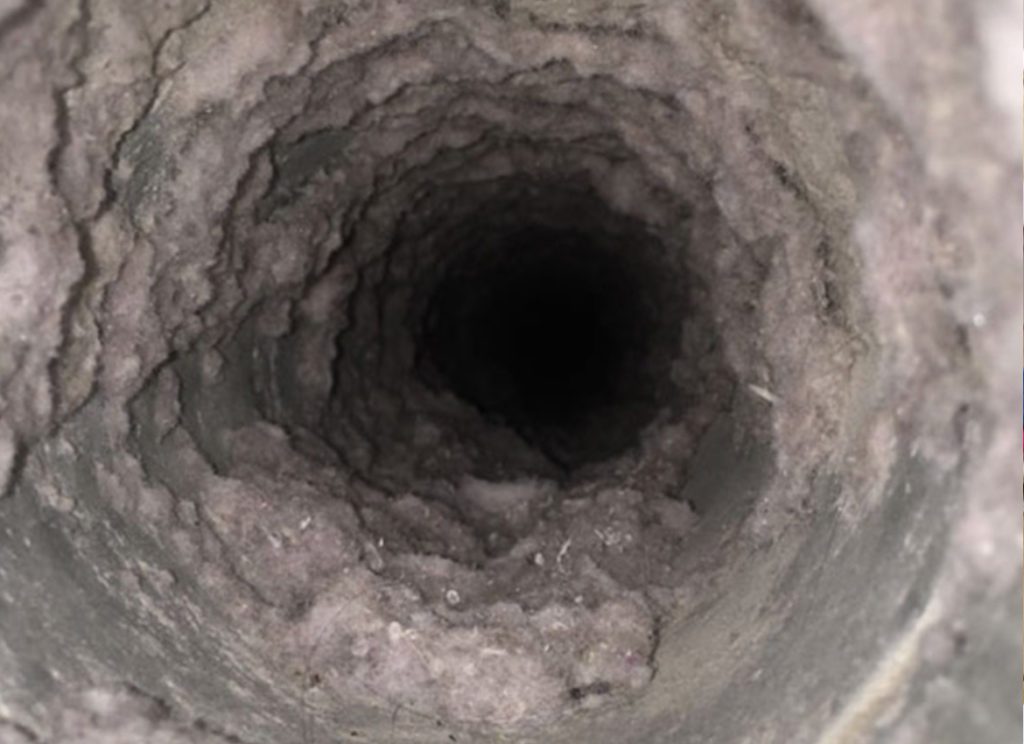
2. Lint build-up reduces airflow which puts stress on your dryer. This often goes undetected.
Lint buildup reduces airflow and prevents your dryer from drying your clothes properly. You may not know this is occurring if you dry your clothing on the Sensor or Auto setting. The dryer will run longer automatically until the clothes are dry. This puts additional stress on your dryer and uses more energy.
Possible results from reduced airflow:
- Carbon monoxide back up (gas dryers only)
- Longer drying times
- Increased utility bill
- Higher operating temperatures
- Dryer component failures
- A shorter overall lifespan for your dryer
- A reduced lifespan for your dryer
- A Dryer Fire
According to the U.S. Fire Administration (USFA), “the most likely items to ignite first are clothing near the dryer, as well as dust, fiber, lint, etc. This can be any place that collects dust and lint, such as within the dryer chassis, on the lint screen, around the dryer or in the dryer duct that carries the lint from the dryer to the outside of the home.”
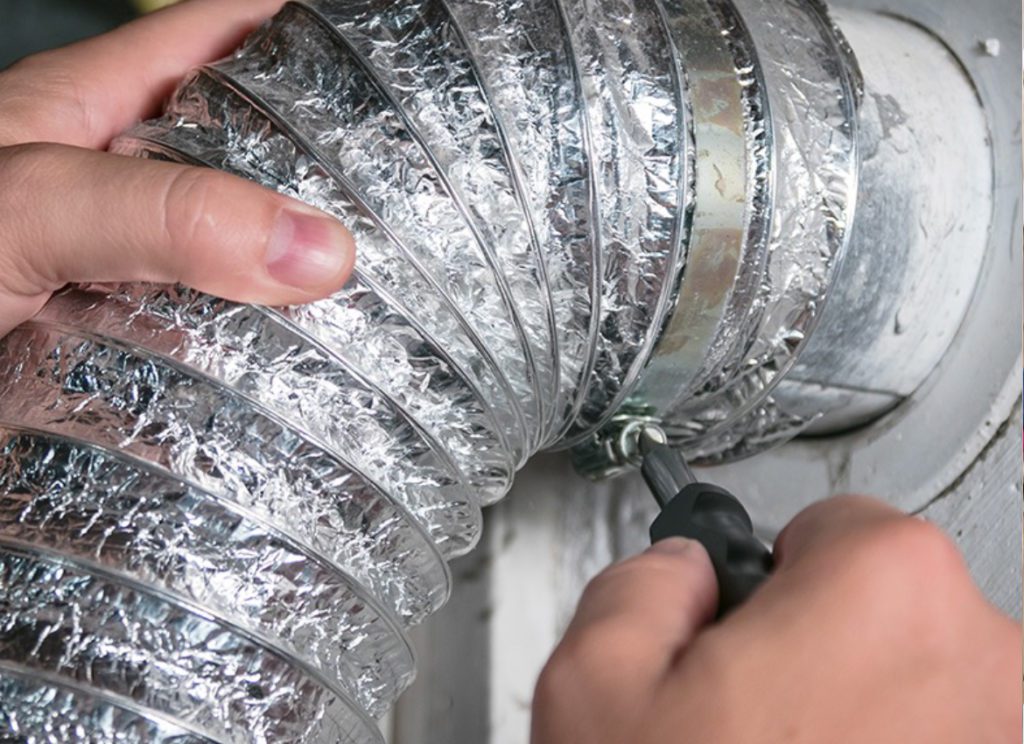
3. 75% of homes are not code compliant in this area.
Most clothes dryers have warning labels on the back of the machine or in the owner’s manual that prohibit the use of plastic or aluminum foil type connector vents (i.e. the vent that connects the appliance to the wall inlet). If you have a plastic or foil flex transition hose the velocity at which air flows through your vent system is likely compromised.
Plastic and foil flex vents do not expand to the full 4″ diameter required by manufacturers and local building codes. The corrugations are perfect places for lint to get stuck and accumulate. Corrugated vents also cause increased turbulence in the airflow which inhibits lint and moisture from exiting the venting system to the outdoors.
Plastic and foil flex vents are flammable and easily become squashed behind your dryer. You should replace your plastic or foil flex vents with metal dryer vents that maintain the required 4″ minimum diameter. We stock the proper type material on our trucks and will be happy to replace your unit during our visit to your home.
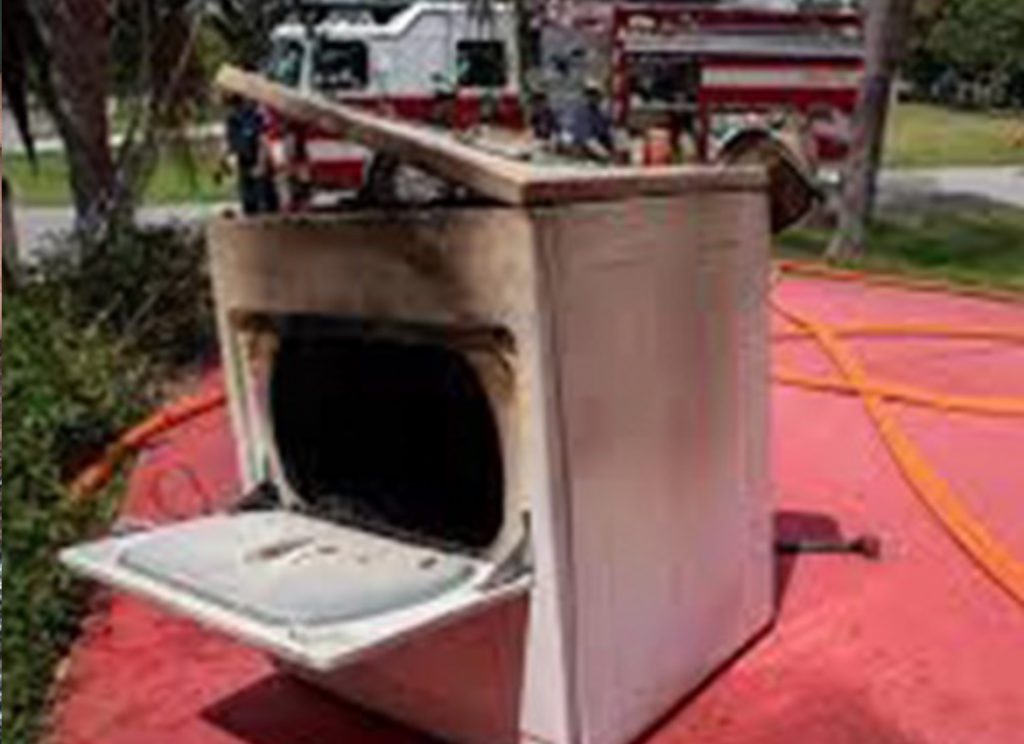
4. Dryer Fires Are Not Fiction
The U.S Fire Administration cites “failure to clean” as the leading cause of over 15,000 dryer related fires that occur each year. Dryer manufacturers, The Consumer Product Safety Commission, and The National Fire Protection Association all recommend periodic cleaning of your dryer and venting system to prevent dryer fires from happening.
According to the National Fire Incident Reporting System, “Failure to clean (31%) was the leading factor contributing to the ignition of clothes dryer fires in homes from 2018‑2020.”

5. Proper dryer vent cleaning methods are usually ignored
The appropriate and thorough way of cleaning a dryer system begins with the clothes dryer itself. Lack of training, ignorance, or outright laziness lead most air duct or carpet cleaning companies to skip this most important step.
For some dryer brands it may require unplugging your dryer, removal of the front of the machine, and the disconnecting of certain electrical components or computer board in order to access the area underneath the drum. This takes time and proper training. Our service team is well trained in this area.
Mechanical issues can be affected by excess lint, dust, dander, and hair inside the machine. We often find pet and human hair wound around the rollers on the machine. Hair and dirt like this on the inside of your dryer will cause performance issues if not removed.
A proper cleaning should include the cleaning of:
- The floor underneath your dryer
- The wall behind your dryer
- The roof or wall exhaust hood or outlet
- The dryer cabinet and components
- Any portion of the dryer vent that leads outside
- The dryer booster blower (if applicable)
- The dryer lint trap housing
- The dryer transition hose or pipe
- The dryer blower
- The interior dryer cabinet duct
- The dryer motor
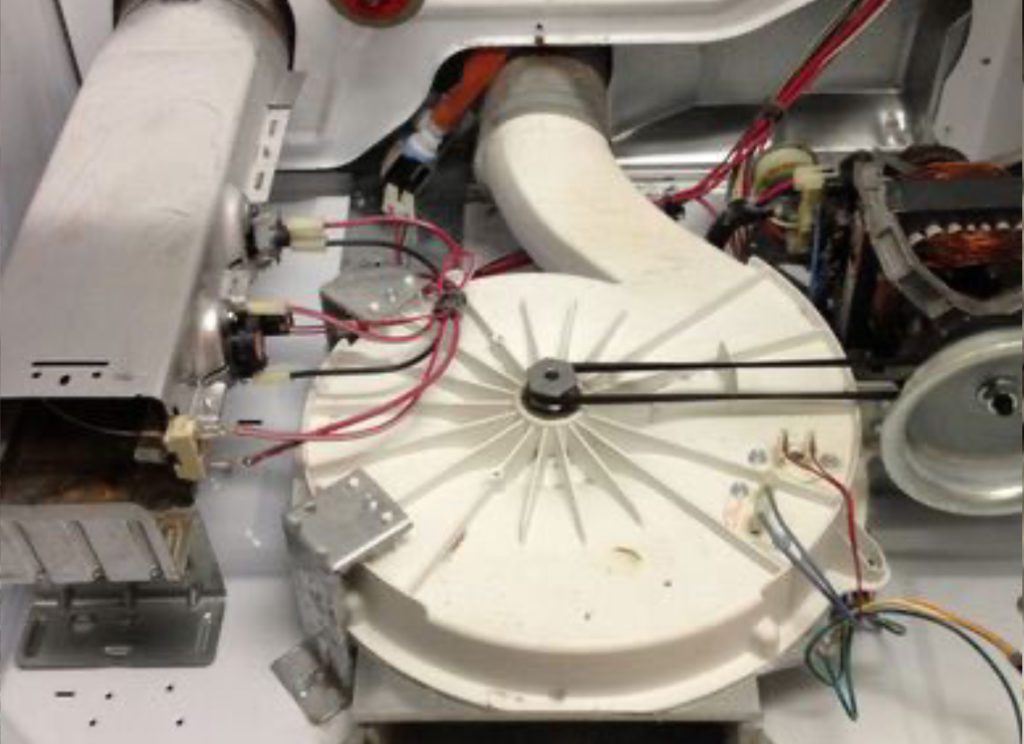
6. Cleaning Frequencies Vary
Most dryers and vent systems require cleaning every one to three years in order to maintain optimum efficiency and the highest level of safety. But how often your dryer vents need cleaning also depends on:
- Volume of laundry dried weekly
- The total length of your dryer vent system
- The number of bends or curves in your dryer vent system
- The type of transition hose
- How many pets you have in your home
- Whether the seams in the vent are screwed or taped together
- The brand of laundry detergent you use
Because they realize many people neglect dryer maintenance, some manufacturers are beginning to require annual dryer vent cleaning throughout the duration of the warranty period in order to honor any potential claims. But does that mean that all dryer duct systems need annual cleaning?
Some may need cleaning twice per year and others every 3 or 4 years. It is not difficult to determine a proper cleaning frequency for your dryer. We can provide a tool that can alert you the very moment your dryer vent needs cleaning!
When we are present in your home, we will assess all the factors as well as measure your dryer’s performance and accurately provide a maintenance schedule you feel safe and comfortable with. We will clean your dryer vent system as often as needed and/or to manufacturer specifications.
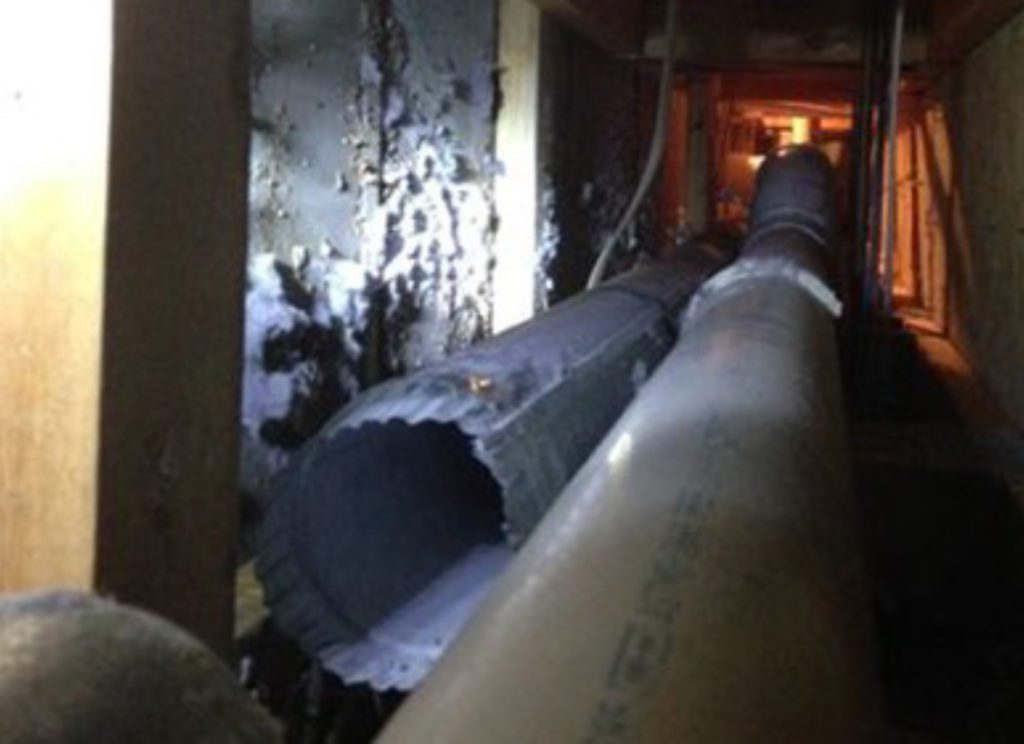
7. Some dryer vents are more problematic than others
Most condos and houses built since 1985 have laundry rooms located toward the center of the building. This results in longer vent systems that can significantly impact overall dryer performance.
Dryer manufacturers establish a maximum vent length to which their machines should be connected. 35 feet has been established by local building codes as the maximum length for a dryer vent. Most authorities however, defer to dryer manufacturer specifications which tend to agree with the 35-foot guideline.
In addition to that guideline, it is recommended that for every 90-degree bend within your venting system, 5 feet should be deducted from the maximum established length. (2.5′ for every 45-degree bend). Bends disturb and reduce airflow. Exceeding the net maximum length will cause lint build-up to occur more rapidly and hinder dryer performance.
Booster blowers can be installed should a lengthy vent be negatively affecting dryer performance. The rerouting of the dryer vent system with a shorter route to the outdoors is also a possibility.
Summary
A clean dryer and venting system allows your dryer to function safely and efficiently. A clean system facilitates maximum airflow, saves energy, limits costly repair service calls, and extends the overall life of your machine.
Maintaining optimum air flow is critical for your dryer to last you the 15 to 20 years it was meant to. Reduced airflow is caused by a compromised transition vent behind the dryer, long venting systems, multiple bends in the system and excessive lint buildup.
